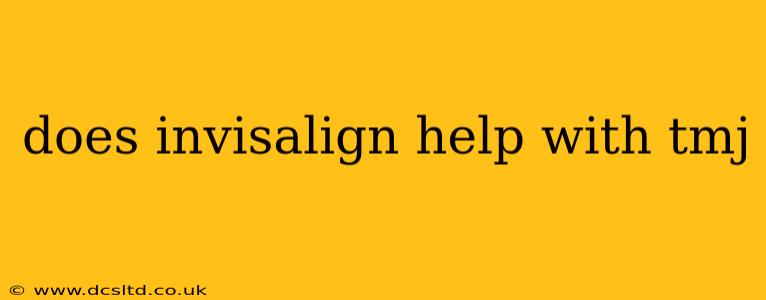Temporomandibular joint disorder (TMJ) is a prevalent condition affecting the jaw joint and surrounding muscles, causing pain, clicking, and limited jaw movement. Many sufferers explore various treatment options, and Invisalign, known for straightening teeth, has sparked interest as a potential solution or at least a contributing factor to TMJ relief. But does Invisalign actually help with TMJ? The answer is nuanced and depends on several factors.
While Invisalign itself doesn't directly treat TMJ, its role in improving jaw alignment can indirectly alleviate some TMJ symptoms for certain individuals. This is because misaligned teeth can contribute to an imbalanced bite, which in turn can strain the temporomandibular joint. By correcting misalignment, Invisalign may reduce this strain and lessen associated discomfort.
However, it's crucial to understand that Invisalign is not a standalone TMJ treatment. For severe TMJ cases, Invisalign alone won't suffice. Let's delve into some frequently asked questions to clarify this relationship:
Can Invisalign Worsen TMJ?
This is a valid concern. While Invisalign aims for improved alignment, the process of shifting teeth can sometimes temporarily exacerbate existing TMJ symptoms. This is more likely if the patient already has significant TMJ issues before starting treatment. A skilled orthodontist will carefully assess the patient's TMJ health before commencing Invisalign treatment. They might recommend alternative treatments or modifications to the Invisalign plan to minimize discomfort.
Does Invisalign Help with TMJ Pain?
In some cases, yes. If TMJ pain stems from malocclusion (improper bite), correcting this misalignment with Invisalign might alleviate pain by reducing strain on the jaw joint. However, it's important to note that not all TMJ pain is caused by bite issues. Other factors like bruxism (teeth grinding), arthritis, or stress can contribute. In these cases, Invisalign might offer minimal to no pain relief.
What are the Alternatives to Invisalign for TMJ?
Several other treatments effectively manage TMJ symptoms. These include:
- Splints or mouthguards: These devices help relax jaw muscles and protect teeth from grinding.
- Physical therapy: Exercises and stretches can improve jaw mobility and reduce pain.
- Medication: Pain relievers, muscle relaxants, and anti-inflammatory drugs can ease discomfort.
- Lifestyle changes: Reducing stress, improving posture, and adopting a healthy diet can all contribute to TMJ relief.
- Surgery: In severe cases, surgery may be necessary to correct jaw joint problems.
Can My Orthodontist Help Me with TMJ?
Your orthodontist should be able to assess your TMJ health and determine if Invisalign is a suitable option. They might refer you to a specialist, such as an oral surgeon or a TMJ specialist, for a more thorough evaluation if needed. It's vital to communicate any existing TMJ symptoms or concerns to your orthodontist before starting treatment.
Is Invisalign a Cure for TMJ?
No, Invisalign is not a cure for TMJ. It can help some individuals experiencing TMJ pain related to malocclusion, but it's not a solution for all TMJ cases. It's more accurate to view Invisalign's potential role in TMJ management as an indirect benefit in specific situations.
How Can I Choose the Right Treatment for My TMJ?
The best approach is to consult with a dentist or specialist experienced in treating TMJ disorders. They can diagnose the underlying cause of your TMJ symptoms and recommend the most appropriate treatment plan based on your individual needs. This might involve a combination of therapies, not just Invisalign alone.
In conclusion, while Invisalign might provide some relief from TMJ symptoms for certain individuals by improving bite alignment, it's crucial to remember it’s not a TMJ treatment in itself. A thorough evaluation by a qualified professional is essential to determine the best course of action for your specific situation. Don't rely solely on Invisalign for TMJ; instead, seek a comprehensive assessment and treatment strategy tailored to your needs.
